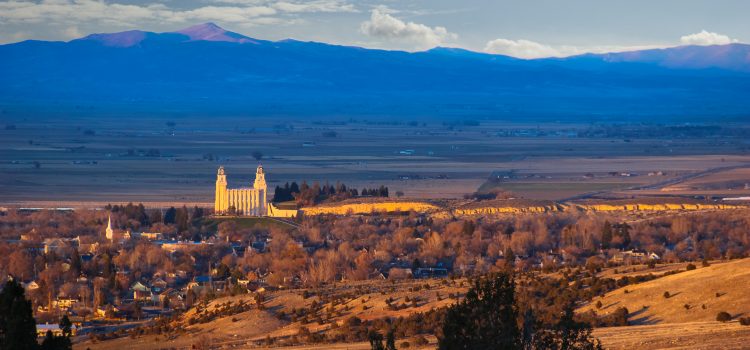
In this article, I will share the kinds of treasures that await at the Church History Library. Anyone who has roots in towns where Mormon pioneers have settled may find a goldmine of historic context and primary sources there. I discovered this while working to nominate a building for the National Register of Historic Places, and unearthed a bounty of nineteenth-century women’s voices. This started as part of a professional job unrelated to my family, so it took my breath away when my own female ancestors made unexpected appearances. I wept when I read the feisty quotes of my fourth-great grandmother. I also happened upon architectural drawings of another ancestor’s home (Isaac Behunin).
What a gift to me!
In summary, one of the biggest takeaways from this project was learning that the Church History Library even exists. I had no idea what a depth of information is available there. This archive may hold clues for anyone with Mormon pioneer ancestors or anyone whose ancestors lived in a town settled by Mormon pioneers. Read on for clues about what you might find.
I didn’t know that the Church History Library is separate from the Family History Library
Originally, I had been looking at the Family History Library in Salt Lake City, but ultimately discovered answers at the Church History Library. I felt dumb when I realized that they’re not the same thing. These two sources are located in different buildings and have entirely different databases. Important details I had been chasing were there all along, but I hadn’t found them because I was looking in the wrong place. Maybe it should have been obvious, but I didn’t know what I didn’t know.
I wrote this article to help you discover the Church History Library too
My main purpose of this article is to share this wonderful source of family histories and town records that may help you with your research projects.
Here is a quick summary of what you might find at the Church History Library:
- Minutes from all the local town auxiliary meetings from the Church of Jesus Christ of Latter-day Saints. Thus, if your ancestors belonged to the church, you might find Relief Society or Priesthood minutes written by them, or mentioning them by name.
- Histories of towns and the Relief Societies. Many of the auxiliary organizations wrote formal histories. These are a rich source of details, historic context, and may even mention your ancestor by name.
- Town records, property deeds, building drawings, letters, and journals. For example, by random coincidence, I happened upon an architectural drawing of my ancestor’s home!
Related article: Ancestral homes – how to research the story of a home or building
Search the database online, but you may need to go in person
There are many collections including the Journal History of the Church. You should check that one out if you are researching pioneer ancestors.
Keep in mind that most of these records are not digitized. They often contain candid notes and names of members, and for this reason it may be worth a visit if you can get to Salt Lake City.
7 tips to maximize your time at the Church History Library:
You might get lucky and find what you need already digitized online, but you must go in person for most records. If you make a trip, plan on running out of time.
With that in mind, here are some tips:
- Research the online database in advance.
- Watch the training video at home before you go. You can’t enter the reading room until you have.
- Request restricted items and microfilm first because they will take time to pull.
- Bring a method to digitize like mad, such as your smartphone and possibly a lightbox/Shotbox. That’s the combo I use. Wait to read and sort out your treasures once you get home because you don’t have time in a single day to do it there.
- Bring a helper, if you can.
- Respect copyright, cite your sources and give credit.
- Watch the clock. Time passes faster than you think.
If you are planning to attend RootsTech take some time while in Salt Lake City to jump over to the Church History Library. And if you want to keep this list handy, below it is as a compact graphic.
What I found at the Church History Library – 5 luminous discoveries
- Full histories already complied: I poured over complete books beautifully compiled by the Ephraim Relief Society women telling their own history. Up to that point, I’d been nibbling on breadcrumbs, and here was a feast already prepared. These books contained the dates, anecdotes, and details I craved and needed. I found the deeds that were the missing pieces to set the National Register nomination straight. Now I could finish my project.
- Candid papers: The Church History Library archives also contained journals, letters, photos, and town histories. Both the quantity and quality of primary sources about Ephraim blew me away.
- Finally, a source for Relief Society minutes: Buried deep in the basement was microfilm containing the ward and Relief Society minutes from the inception of the town. The minutes I had been searching for were there! The women’s voices were there – in their own words, buried and forgotten in the basement of the archives.
- A connection to other researchers: The desk librarian put me in touch with a wonderful researcher who wrote her dissertation on the very subject I was researching. This researcher shared her work with me and I shared mine with her. She got me in touch with another Church historian with deep expertise on the matter.
- An uncanny connection: While seated at one of the microfilm computers, I found an architectural drawing of my ancestor’s home: the Isaac Behunin house. As I had this file on the screen, the man at the computer next to me asked what I was working on. I shared, and he replied, “Oh yes, I know the Ephraim Granary well. I’m researching C.C.A. Christensen.” Are you kidding me? Of all the days, times, and computers, we two were side-by-sidem looking at files related to contemporaries in the same town, that related to the same project. One of them was my ancestor, and the other person was the ancestor of my partner in the project. Uncanny indeed.
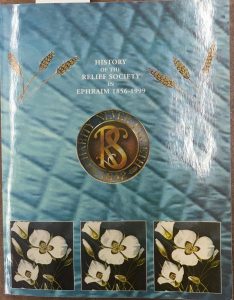
Gratitude for the people who kept these records
I want to take a quick moment to say, bless the people who preserve records like these! Historian David McCullough expressed this beautifully when he spoke at the Church History Library opening:
“History doesn’t stay alive unless it’s looked after.”
– David McCullough
Backstory – the project that led me there
In the summer of 2018, my friend Shale Larsen, the principal architect at IO LandArch, asked if I’d be interested in doing the research and writing to nominate the Ephraim Relief Society Granary to the National Register of Historic Places. Granary Arts, the nonprofit that operates from the building, was looking for women to work on the job. They hoped the story would spark our imagination and perhaps invest a little extra effort to connect with the story. Wowza, did it ever.
This beautiful building made of oolitic stone had been part of the historic Relief Society Grain Program.
Read related article – Culmination of this research project – The Ephraim Relief Society Granary
Two ancestral connections
In the very first phone call, Shalae told Amy Jorgensen about her own connection to Ephraim saying, “My third-great-grandfather was the painter C.C.A. Christensen.”
Jorgensen, the Executive Director for Granary Arts replied, “Yes, we’ve heard of him. C.C.A.’s cabin is located on our property, right behind the granary.”
That sealed it for Shalae, and when she called me I jumped at the chance too. I am enamored of the Sanpete Valley, feeling a special sense of place whenever I set foot there. My maternal grandmother’s family hails from that area and it always feels as though my ancestors want to be remembered. That said, I really had not researched their stories until this project. (That adage about the cobbler’s children comes to mind).
The plot thickened the first time I drove down to see the building. After parking, I made a beeline for a monument in the corner of the lot. When I read the plaque, the hairs on my arm prickled. That monument informed me that this was the spot of the original Ephraim Fort where the first two dozen families lived. Two of those families were mine: the Behunins and Allreds. My ancestors lived on this very land. The idea filled me with awe.
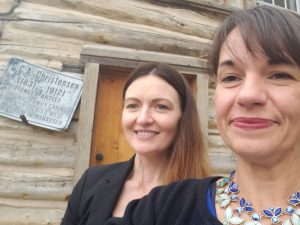
Now I really wanted to find the voices
If I hadn’t been all-in before, I was now. I felt compelled to find stories and voices that would bring the narrative to life.
One important breadcrumb came from the breathtakingly beautiful book by Professor Thomas Carter, Building Zion: The Material World of Mormon Settlement. I couldn’t believe my good fortune in finding a book of this depth using the unpretentious Sanpete Valley as a case study for the whole Mormon settlement. This book was replete with architectural drawings, historical context, and quotes.
The moment Annie Larsen spoke
As I devoured its pages, one moment above all others left me breathless. Carter explained that Relief Society women often had to fight for autonomous ownership of their halls and granaries. He pointed to a saga in Spring City as an example. The women wanted a space of their own, but the men kept proposing alternatives to combine it with other functions: a library, school, etc.
Then he quoted a conversation from the Relief Society minutes, and the name of my fourth great-grandmother jumped off the page. Annie Larsen (sometimes alternatively spelled “Ane” in the histories) was one of the town elders now. She had been an early pioneer settler, having buried a child in a cedar box in the frozen ground on the trek west. I tracked that story down on FamilySearch and it touched me so deeply that tears rolled down my cheeks.
Here in the minutes, however, was a whole different side of her. She spoke in the meeting with stubbornness and a tinge of sarcasm. She was holding out for the women to get their own space. The Spring City Relief Society did get their hall, as they did in Ephraim. (As a side note, it took until the 1950s for women to get a building at Temple Square. That saga broke the hearts of the Relief Society Presidency who called it a “humiliation,” but that’s a story for another day.)
Related: Pioneer stories help us work harder, be more grateful
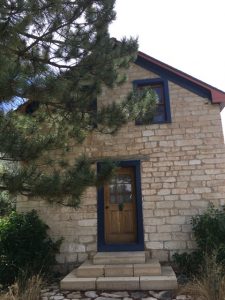
The women made their own record in their voices!
Back to Spring City, whoever kept the minutes had cataloged proceedings in such a way that it captured flavor and personality. This was not the sort of formal testimony that one might write for posterity, this was a rare glimpse into the room. It showed what the ladies discussed and more importantly, what they were thinking. It had personality.
Tom Carter’s book Building Zion pointed out to me how important it was that the women made their own record.
“Zion was a man’s world. In reading over 50 years of ward minutes for each town in the valley, I encountered no female voice. They were there, but in public at least, perfectly silent. We can hear their voices in journals and diaries but mostly they speak of their daily routines.”[1]
[1]Carter, Thomas. Building Zion: The Material World of Mormon Settlement. Minneapolis: University of Minnesota Press, 2015.
But where were those original minutes kept? I couldn’t figure it out.
From the moment I read Carter’s book, I went on a quest to find the town’s Relief Society minutes. I made phone calls all over the valley. Were minutes located in the City’s archives? At Snow College? The local FamilySearch centers? With the Sons or Daughters of the Utah Pioneers? Nobody knew. I paid a genealogist friend for some help. I checked online but couldn’t see any indication that the minutes were at the Family History Library. I visited the Fairview Museum of History and Art, we did a title search, and we searched newspaper articles. And still, I couldn’t find those minutes. By now I had invested at least triple the number of hours I should have spent on the job. I felt no choice but to call it good and I wrote the first draft of the nomination.
The details that eluded me
A niggling problem remained, however. There was a gap in the building’s chain of ownership and I knew something wasn’t right. We had an incomplete narrative would shortchange the women. Hence, if we wanted the nomination to reflect the true female contribution, I’d have to invest more time. I dragged my feet planning a trip to the Family History Library because of how much time it would take to go. is meant investing yet another day without pay. But I was in this far and should see it through to the end.
When I called the Family History Library, I finally discovered the Church History Library apart from it
Before heading to Salt Lake City, however, I called to see if the hoped-for records were at the Family History Library. After getting bounced from voicemail to voicemail and back to the original operator, someone finally delivered a revelation—the minutes are located at the Church History Library. That’s when I figured out what had been eluding me – this is a completely different building across the street from Temple Square. They have a separate database. No wonder I couldn’t find anything. I felt like an idiot for not knowing this.
A reward that made up for feeling like an idiot
The reward that came next more than made up for my feeling of embarrassment. A few minutes later I was neck-deep in the right database and by day’s end I had amassed 31 pages of call numbers and summaries I hoped to view. Now I was giddy with anticipation.
I spent a day there with the help of an assistant, and we found the full books of minutes, town histories, quotes, deeds, everything. Literally, everything I needed to finish the job was all there. Truly, it was so much more than I could have hoped.
I hope this inspires you to check out the Church History Library
In summary, I hope this article has inspired you to look into this important repository for context, history, and primary sources for your projects.
 Rhonda Lauritzen is the founder and an author at Evalogue.Life – Tell Your Story. Rhonda lives to hear and write about people’s lives. She believes that when you tell your story, it changes the ending., She and her husband Milan restored an 1890 Victorian in Ogden. She especially enjoys unplugging in nature. Check out her books: How to Storyboard, and Every Essential Element. Most recently she was the writing coach of bestselling author, Rob A. Gentile, who wrote Quarks of Light, A Near-Death Experience: What I Saw That Opened My Heart
Rhonda Lauritzen is the founder and an author at Evalogue.Life – Tell Your Story. Rhonda lives to hear and write about people’s lives. She believes that when you tell your story, it changes the ending., She and her husband Milan restored an 1890 Victorian in Ogden. She especially enjoys unplugging in nature. Check out her books: How to Storyboard, and Every Essential Element. Most recently she was the writing coach of bestselling author, Rob A. Gentile, who wrote Quarks of Light, A Near-Death Experience: What I Saw That Opened My Heart
Endnotes:
[I] The Church’s official style guide states that the name of the church should be used formally as The Church of Jesus Christ of Latter-day Saints, or abbreviated as The Church of Jesus Christ. The terms “Mormon” and LDS are frowned upon unless used in historic context. In that spirit, I will use the term Mormon in this article to refer to earlier periods as appropriate.
National Register of Historic Places listing: https://www.nps.gov/places/ephraim-relief-society-granary.htm
Ephraim Relief Society Granary Wikipedia page: https://en.wikipedia.org/wiki/Ephraim_Relief_Society_Granary
GranaryArts history: https://www.granaryarts.org/history-of-the-ephraim-relief-society-granary

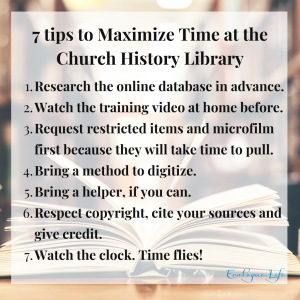

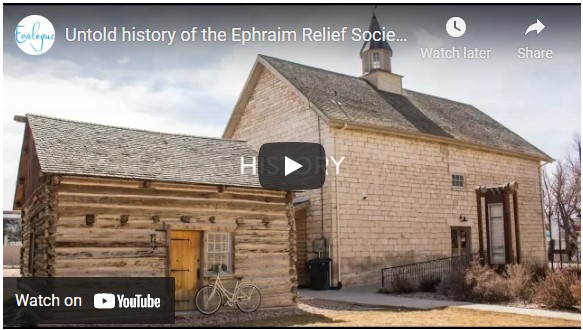

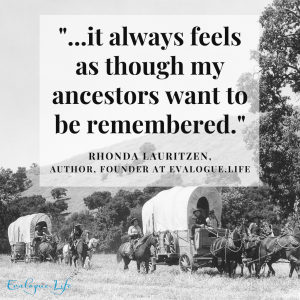
I was ignorant of the Church History Library until I read this article. Thank you so much! My family history also originate in Sanpete County (Manti – Maternal Grandparents), and Iron County (Cedar City – Paternal Grandparents). I live in Michigan and am so happy to know there is a online option to check out. Thanks again and Happy Pioneer Day!
Jane – if you didn’t know it exists, then you are in good company. I always felt like I SHOULD have known this, but somehow didn’t. The fact that my article helped alert you to this treasure trove made writing it worth it. How wonderful that your family has roots in Sanpete County. It’s a special place. Thanks for your comment.
Somewhere in this article, I saw a reference that you were teaching a class at the BYU FamilyHistory Conference. Now I cannot find that information. I will be attending the conference and would very much enjoy the class. Please tell me when it will be taught, or kindly remind me that I am over the hill.
Hi there, you saw correctly. It went out in our email and was not in the body of this article. The time is Wednesday July 31 at 1:30 p.m. Rachel Trotter is teaching “Family storytelling: the fine art of interviewing.” She would LOVE to have you come. It’s always a treat to meet readers in person.
My ancestors helped settle Sanpete County and lived in Fairview. I learned a lot from the article you wrote and am excited to dig a little some time at the Church History Library. Thank you for sharing what you learned!
Karen thank you for your comment. I hope you find some unexpected treasures at the Church History Library that surprise and delight you.
You keep inspiring me as I write my memoirs. And yes, I will check out the Church History Library as my ancestors lived for a few years in Utah before continuing on to southern Alberta, Canada. I’ve read your blog for a couple of years now. Thank you for your helpful articles.
Michael Jensen
Michael, it’s always a pleasure to hear from any reader, especially you as you’ve been with us a long time. Thanks for dropping me a note because it makes my heart happy to know you are working on your story, and that our work is helpful to you. The work you are doing is important so keep up the good fight.